#Welsh Novelists
Explore tagged Tumblr posts
Text
HIS DAY IN GAY HISTORY
based on: The White Crane Institute's 'Gay Wisdom', Gay Birthdays, Gay For Today, Famous GLBT, glbt-Gay Encylopedia, Today in Gay History, Wikipedia, and more … January 1

I hope you are enjoying This Day in Gay History. It was started out as a reposting of White Crane's daily newsletters in early 2011 has gained a life of its own and grown out in many directions, in particular, gaining a international identity. The postings now come from many sources, some of them credited in the masthead, but also from tips and suggestions from members. As we move into a new year, you will find you have seen many of the postings before, but always check them out, because there will always be something new, especially as so many public figures are now coming out of the closet. Your Admin




1533 – Italy: Michelangelo writes a love letter to Tommaso de Cavalieri, devoting "the present and the time to come that remain to me."


Rare snapshot of Charles Kains Jackson
1857 – Charles Kains Jackson (d.1933) was an English poet closely associated with the Uranian school.
Beginning in 1888, in addition to a career as a lawyer, he served as editor for the periodical the Artist and Journal of Home Culture, which became something of an official periodical for the movement. In it, he praised such artists as Henry Scott Tuke (to whom he dedicated a sonnet) and Henry Oliver Walker. He also befriended such similar-minded contemporaries as Frederick William Rolfe, Lord Alfred Douglas and John Addington Symonds.The homosexual and pederastic aspects of the Artist declined after the replacement of Kains Jackson as an editor in 1894. The final issue edited by Kains Jackson included his essay, 'The New Chivalry', an argument for the moral and societal benefits of pederasty and erotic male friendship on the grounds of both Platonism and Social Darwinism. According to Kains Jackson, the New Chivalry would promote 'the youthful masculine ideal' over the Old Chivalry's emphasis on the feminine. Jackson's volumes of poetry include Finibus Cantat Amor (1922) and Lysis (1924).
Kains Jackson was a member of the Order of Chaeronea, a secret society for homosexuals founded in 1897 by George Ives, which was named after the location of the battle where the Sacred Band of Thebes was finally annihilated in 338 BC. Other members included Samuel Ellworth Cottam, Montague Summers, and John Gambril Nicholson.


1879 – E.M. Forster (d.1970) was an English novelist, short story writer, essayist and librettist. He is known best for his ironic and well-plotted novels examining class difference and hypocrisy in early 20th-century British society.
Forster was born into an Anglo-Irish and Welsh middle-class family in London. England. He attended the famous public school Tonbridge School in Kent as a day boy. The theatre at the school is named after him, and later studied at King's College, Cambridge, between 1897 and 1901.
After leaving university he travelled in continental Europe with his mother. He visited Egypt, Germany and India with the classicist Goldsworthy Lowes Dickinson in 1914. By that time, Forster had written all but one of his novels. In the First World War, as a conscientious objector, he volunteered for the International Red Cross, travelling to Alexandria, Egypt.
Why didn't EM Forster write much of anything in the second half of his life? According to a new biographer, Wendy Moffat, who has had access to Forster's private papers, what knocked him off track was losing his virginity in his late 30s.
He slept with a wounded soldier in Egypt, in 1917 - "losing R [respectability]" he called it in his private diary. After that, he set about making up for lost time. "I should have been a more famous writer if I had written or rather published more," he later explained, "but sex prevented the latter."
Back in England Forster divided his time between his mother in the Home Counties and gay friends and bisexual boys in his London flat. Homosexuality in Britain was aggressively persecuted then and Forster wisely centred his affairs on officers from Hammersmith police station.
One of them, Bob Buckingham, became the love of Forster's life. Bob was bisexual and soon married, however, he never abandoned Forster. As for writing novels that stopped with the development of his homosexual life.
Forster developed a long-term loving relationship with Bob Buckingham, and his wife, and included the couple in his circle, which also included the writer and arts editor of The Listener, J.R. Ackerley, the psychologist W.J.H. Sprott, and, for a time, the composer Benjamin Britten. Other writers with whom Forster associated included the poet Siegfried Sassoon and the Belfast-based novelist Forrest Reid.
In the 1930s and 1940s Forster became a successful broadcaster on BBC Radio. He was a humanist, homosexual, and lifelong bachelor.
Forster had five novels published in his lifetime. Although Maurice appeared shortly after his death, it had been written nearly sixty years earlier. A seventh novel, Arctic Summer, was never finished. The earlier novels are Where Angels Fear to Tread (1905), The Longest Journey (1907), A Room with a View (1908), and Howards End (1910).
Forster achieved his greatest success with A Passage to India (1924). The novel takes as its subject the relationship between East and West, seen through the lens of India in the later days of the British Raj. Forster connects personal relationships with the politics of colonialism through the story of the Englishwoman Adela Quested, the Indian Dr. Aziz, and the question of what did or did not happen between them in the Marabar Caves.
Maurice (1971) - his one novel to deal head-on with homosexuality - was written some years previously, though it was published only after his death. His posthumously-published novel tells of the coming of age of an explicitly Gay male character.
Maurice is a homosexual love story which also returns to matters familiar from Forster's first three novels, such as the suburbs of London in the English home counties, the experience of attending Cambridge, and the wild landscape of Wiltshire. The novel was controversial, given that Forster's sexuality had not been previously known or widely acknowledged. Today's critics continue to argue over the extent to which Forster's sexuality, even his personal activities, influenced his writing.
Forster's two best-known works, A Passage to India and Howards End, explore the irreconcilability of class differences. A Room with a View also shows how questions of propriety and class can make connection difficult. The novel is his most widely read and accessible work, remaining popular long after its original publication. His posthumous novel Maurice explores the possibility of class reconciliation as one facet of a homosexual relationship.
Sexuality is another key theme in Forster's works, and it has been argued that a general shift from heterosexual love to homosexual love can be detected over the course of his writing career. The foreword to Maurice describes his struggle with his own homosexuality, while similar issues are explored in several volumes of homosexually-charged short stories. Forster's explicitly homosexual writings, the novel Maurice and the short-story collection The Life to Come, were published shortly after his death.
Forster died of a stroke in Coventry on 7 June 1970 at the age of 91. at the home of his policeman friend and his wife, the Buckinghams.


1895 – Although never elected to any office, J. Edgar Hoover (d.1972) wielded tremendous political power in the United States government for almost five decades, and through eight presidencies, as head of the Federal Bureau of Investigation. Under his leadership, the Bureau developed from a weak and ineffectual collection of political appointees into one of the most efficient police agencies in the world.
It also developed into an undercover secret police that frequently used illegal means to gather damaging information, not only on criminals and political dissidents, but also on political leaders as well. Although Hoover was always in the front lines of government attempts to harass homosexual liberation movements, rumors that he himself was gay followed him throughout his career.
Hoover went to work for the Justice Department in 1917 as a clerk, but moved up quickly by virtue of his efficiency and his vigorous action against Communists and radicals during the late 1910s and 1920s. He supervised the deportation of foreign-born radicals in the great strike wave of 1919.
In 1924, he was appointed head of the Bureau of Investigation of the Justice Department (renamed Federal Bureau of Investigation in 1935). Hoover immediately began to tighten up the slack Bureau. New agents were hired and promoted based on merit and strict performance reviews. He used his library experience to re-organize records and files, and he began amassing his famous "secret files," confidential information, often illegally obtained, which he kept to use against anyone who might threaten his power or tenure.
Hoover soon became both famous and feared for his zealous campaigns against such criminal and "subversive" groups as the Communist Party and the Ku Klux Klan. During the prohibition era, his "G-men" hunted down and caught many prominent gangsters, such as Al Capone and John Dillinger.
During the 1950s, he participated fully in the McCarthy witch hunts, zealously seeking out Communists and fellow-travelers.
Along with pursuing Communist sympathizers, Hoover also led a campaign of harassment directed at the new "homophile" groups such as the Mattachine Society, which sprang up to protest mistreatment of gay men and lesbians. F.B.I. agents took pictures and license plate numbers at demonstrations and infiltrated meetings and conferences of the fledgling homophile groups.
Many believe that Hoover took this anti-gay stance to cover his own homosexuality. Although he constantly (and violently) denied it, whispers about his sexuality followed Hoover throughout his career. For example, a 1943 internal F.B.I. memo reported claims that the director was homosexual.
Hoover's lifestyle fit many gay stereotypes: he was a sharp, dandified dresser, known for his white linen suits and silk handkerchiefs, who collected antiques and lived with his mother until her death when he was 42. He was never known to have even one date with a woman, yet he had several intimate relationships with men, notably a more than forty-year relationship with the handsome Clyde Tolson, his second-in-command at the F.B.I.
Hoover and Tolson rode to work together, ate lunch and dinner together most days, and took vacations together. Many observers described their relationship as marriage-like. Although some commentators believe that Hoover's rigid morality and strict religious beliefs would not have permitted him to have a physical relationship with a man, the rumors of his homosexuality were accelerated by the appearance, after their deaths, of photographs of Hoover and Tolson in drag, photographs that were allegedly Mafia blackmail pictures.
If Hoover and Tolson were homosexual, as seems more and more likely, their roles as persecutors of other homosexuals casts into bold relief the nightmare-like quality of the McCarthy era's war on homosexuality.
Hoover remained in charge of the F.B.I. until his death from a heart attack on May 2, 1972.


1927 – Maurice Béjart (d.2007) was a French born, Swiss choreographer who ran the Béjart Ballet Lausanne in Switzerland. He was the son of the French philosopher Gaston Berger.
Perhaps the preeminent descendant of Sergei Diaghilev and Serge Lifar, Maurice Béjart was a significant presence in late twentieth-century and early twenty-first century dance as an innovator with a radical vision. Central to his reinvigoration of classical ballet was his creation of palpably homoerotic dances that celebrate male beauty.
After studying with Léo Staats, Lubov Egorova, and Madama Rousanne (Sarkissian) in Paris, he performed with Mona Inglesby's International Ballet and the Royal Swedish Ballet and sealed his reputation as industrious and disciplined before creating dances for his own path-breaking companies.
Symphonie pour un homme seul (1955, with a score by Pierre Schaeffer and Pierre Henry), featuring the first electronic score to accompany ballet, established Béjart as an innovator with a radical vision.
After presenting an electrifying interpretation of The Rite of Spring (set to the classic Igor Stravinsky score) informed by myth, sexual heat, and stage flash in 1959 at the Théâtre Royale de la Monnaie in Brussels, he founded The Ballet of the Twentieth Century, a company that had a major influence on the European Dance Theatre movement.
Nijinsky: Clown of God (1971, set to a score combining music by Peter Ilich Tchaikovsky and Pierre Henry), a dreamlike meditation on Vaslav Nijinsky and his legacy, is only one prominent example of Béjart's personal identification and connection with his choreographic subjects.
Many times that connection, as in Nijinsky: Clown of God, was palpably homoerotic. In addition to reimagining Ballets Russes classics such as The Firebird (to the original Stravinsky score), Pétrouchka (to the Stravinsky score) and The Specter of the Rose (to a score of a piano piece by Carl Maria von Weber, orchestrated by Hector Berlioz) to spectacular effect, he also derived inspiration from such gay icons as Prometheus, Dionysus, Orpheus, and Saint Sebastian.
Collaborating closely with many extraordinarily handsome men (Argentine Jorge Donn and Italian Paolo Bortoluzzi among them), Béjart consistently created dances celebrating male beauty and eroticism, not the least of which was the all-male variant of his Boléro (1960, to the throbbing score by Maurice Ravel).
Audiences and critics were either enthralled or enraged by later offerings such as the celebratory Ballet for Life (1997, set to a score combining classical Mozart with pop-rock Queen), in response to the AIDS-related deaths of his friends Jorge Donn and Freddie Mercury of the rock group Queen; and Bolero for Gianni (1999, set to his all-time-favorite Ravel score), a tribute to the murdered Gianni Versace, who had designed the eye-popping costumes for that 1997 dance.
Although beset by kidney problems and other illnesses in his final years, Béjart continued working until the very end of his life. He died on November 22, 2007.


1944 – Eloy de la Iglesia (d.2006) was a Spanish screenwriter and film director.
De la Iglesia was an outspoken gay socialist filmmaker who is relatively unknown outside Spain despite a prolific and successful career in his native country. He is best remembered for having portrayed urban marginality and the world of drugs and juvenile delinquency in the early 1980s. Many of his films also deal with the theme of homosexuality.
Born in Zarauz, Guipúzcoa into a wealthy Basque family, he grew up in Madrid. He attended courses at the prestigious Parisian Institut des hautes études cinématographiques, but he could not enter Spain’s national Film School because he wasn't yet 21, the minimum age required for admission. Instead, he began to study philosophy and literature at the Complutense University of Madrid, but on his third year he abandoned it to direct children’s theater. By age twenty he had already written and directed many works for television sharpening his narrative skills. He established himself as a writer of children's television programs for Radiotelevisíon Española in Barcelona.
De la Iglesia made his debut as film director when he was only twenty-two years old with Fantasia 3 (Fantasy 3) (1966), adapting three children’s stories: The Maid of the Sea, The three hairs from the devil and The Wizard of Oz. While doing mandatory military service, he wrote the script of his second film, Algo Amargo en la Boca (Something Bitter Tasting) (1968). Algo Amargo en la boca, a sordid melodrama, and de la Iglesia’s next film, Cuadrilatero (Boxing Ring) (1969), a boxing story, faced problems with the Francoist censors and failed at the box office. His films did not attract widespread notice until his fourth effort, the critically acclaimed thriller El Techo de Cristal (The Glass Ceiling) (1970).
The dismantling of the Francoist censorship allowed Eloy de la Iglesia to increase sexually charged tones in his works. This approach became apparent in his films: Juego de amor prohibido (Games of Forbbiden Love) (1975) and La otra alcoba (The other bedroom) (1976). In the late 1970s Eloy de la Iglesia, associated with journalist and screen writer Gonzalo Goicoechea, tackled former taboo subjects in Spanish Cinema. Los placeres ocultos (Hidden Pleasures ) (1977) focused on homosexuality. El diputado (Confessions of a Congressman) (1979), follows the story of a politician who is blackmailed due to his secret homosexuality and El sacerdote (The Priest ), also released in 1979, deals with a conservative catholic priest whose sexual obsessions leads him to self-mutilation.
Like many of the young protagonists of his films, Eloy de la iglesia became addicted to drugs such as heroin and he stopped making films for fifteen years. Claiming that his addiction to cinema was stronger than his drug problems, de la Iglesia eventually kicked his habit and resumed his career making Los novios bulgaros (The Bulgarian Lovers) (2003), a film based on the novel of the same title written by Eduardo Mendicutti.
Stricken with kidney cancer, he died on March 24, 2006, age sixty two, after surgery to remove a malignant tumor.


1959 – Fidel Castro seized power in Cuba after leading a revolution that drove out dictator Fulgencio Batista. Castro then established a Communist dictatorship. Although homosexuality was illegal under the Batista government the laws were largely ignored in fun loving Cuba. Since Castro, tens of thousands of gays have been rounded up and imprisoned.


1967 – The Los Angeles Police Department raid the New Year’s Eve parties at two gay bars, the Black Cat Tavern and New Faces. Several patrons were injured and a bartender was hospitalized with a fractured skull. Several hundred people spontaneously demonstrate on Sunset Boulevard and picket outside the Black Cat. The raids prompted a series of protests that began on 5 January 1967, organized by P.R.I.D.E. (Personal Rights in Defense and Education). It’s the first use of the term "Pride" that came to be associated with LGBT rights and fuels the formation of gay rights groups in California, well before the Stonewall Riot.
The popular notion that the Stonewall Riots marked the very first time that LGBT folks "fought back instead of passively enduring humiliating treatment,” is false. Other critical moments in LGBT History that pre-date Stonewall include:
New Year's Ball Raid in San Francisco (1965)
Gene Compton’s Cafeteria Riot (1966)
Cooper Do-Nuts Riot (1959)


1968 – Joey Stefano (d.1994) was an American pornographic actor who appeared in gay adult films. Born Nicholas Anthony Iacona, Jr., Stefano grew up in the Philadelphia area (Chester, Pennsylvania). His father died when he was 15. After several years of prostitution and hard-core drug use in New York City, Stefano moved to Los Angeles and quickly became a star in gay pornography. In addition to his good looks, his persona as a "hungry bottom" (sexually submissive but verbally demanding) contributed to his popularity.
His image and success caught the attention of Madonna, who used him as a model in her 1992 book Sex.
During his lifetime, he was the subject of rumors (some of them spread by himself) regarding his relationships with prominent entertainment industry figures who were known to be gay. At a May 1990 dinner and interview with Jess Cagle (Entertainment Weekly) and Rick X (Manhattan Cable TV's The Closet Case Show), Stefano discussed an alleged series of "dates" with David Geffen, who at one point implored Stefano to quit using drugs. After the videotaped interview appeared on Rick X's show, OutWeek Magazine "outed" Geffen, who went on to announce his homosexuality at an AIDS fundraiser.
He was HIV positive. According to a subsequent biography Stefano died of speedball overdose (cocaine, morphine, heroin, and ketamine) at age 26 in the shower of a motel on Sunset Boulevard in Hollywood, California. His body was taken back to Pennsylvania where he was buried next to his father.
Stefano's life is chronicled in the book, Wonder Bread and Ecstasy: The Life and Death of Joey Stefano by Charles Isherwood. His life is also the subject of a one-man-play, Homme Fatale: The Fast Life and Slow Death of Joey Stefano, by Australian playwright Barry Lowe.


1976 – (Daniel L.) Dan Kloeffler is an American television journalist. Since 2010, he is an anchor of ABC News Now, a cable-news channel of the ABC broadcasting network.
He worked at WSTM-TV - an NBC-affiliated television station in Syracuse, New York - prior to joining MSNBC, a cable-news channel. While at MSNBC, he anchored overnight MSNBC Now news updates as well as MSNBC's First Look and broadcast network NBC's Early Today, both early-morning news programs; Kloeffler left MSNBC in 2009. In 2010, he became a freelance anchor and correspondent for ABC News, where he anchors on its ABC News Now channel.In response to the news that actor Zachary Quinto had come out as gay, Kloeffler publicly came out on the air in October 2011.
In a statement on the ABC News website, he wrote that a series of suicides by gay youth also led him to hope his being publicly out would help encourage young gay people struggling to accept themselves.


2008 – Queen Elizabeth II makes actor Ian Mckellen a Companion of Honor, one of only 65.


21 notes
·
View notes
Text
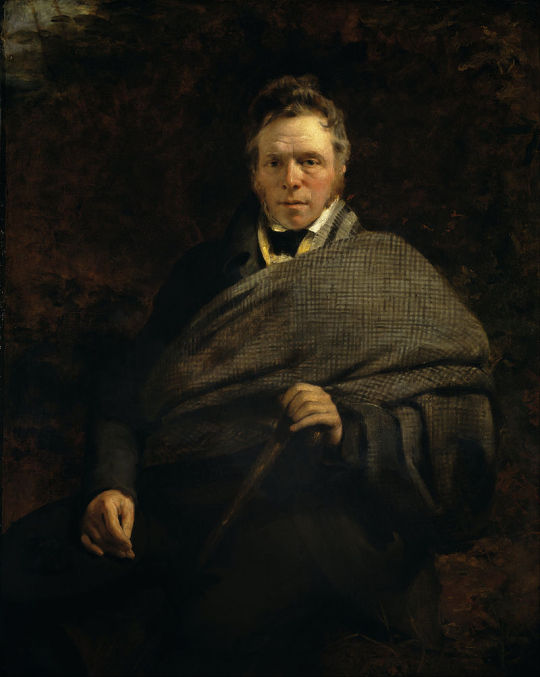
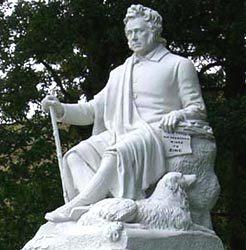
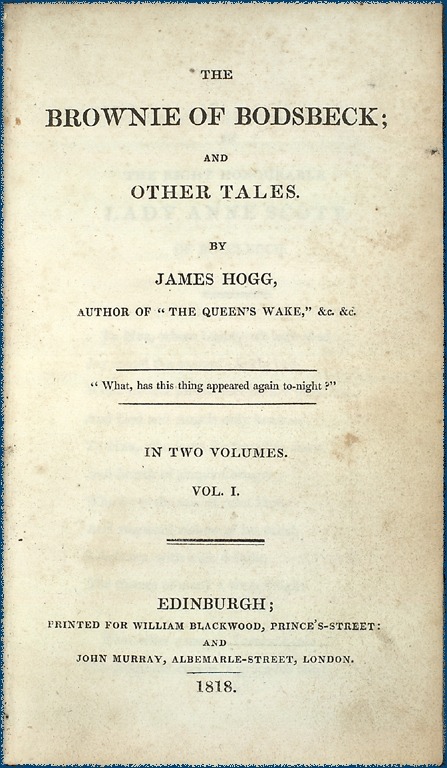
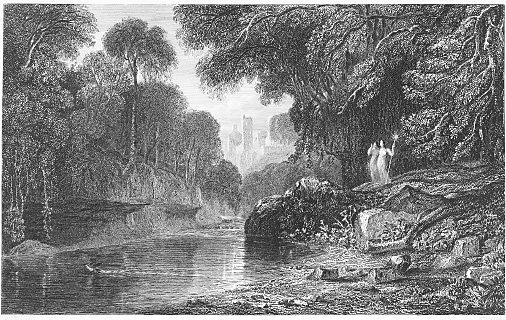
On November 21st 1835 James Hogg, the poet known as the Ettrick shepherd, died in Ettrick.
As his date of birth is unknown and only a gueestimate, and it being so close, I will forgo the December date and concentrate on todays post.
Like Burns and Scott, James Hogg was keenly interested in Song. He published a book of music known as The Forest Minstrel. Originally published in 1810, The Forest Minstrel is the complete collection of songs by Hogg, featuring his first compositions as a shepherd in Ettrick and those inspired by early contact with the literary culture of Edinburgh. Hogg also taught himself to play the fiddle, and rapidly began to make a name for himself as "Jamie the Poeter", a singer of traditional ballards and reciter of the rich folklore of the Scottish Borders, he could also draw, as seen in the pic which shows The River Esk in Roslin Glen, a body of water I know very well.
James Hogg was born on a farm near Ettrick Forest in Selkirk and baptized there onor around December 9th. The house that James Hogg was born in was at Ettrick Hall, a few miles from St Mary's Loch. Here a statue commemorates his birth. He lived here for the first seven years of his life. James Hogg had little education, and became a shepherd, living in poverty. His father was a shepherd and he too took on the title, hence his nickname, The Ettrick Shepherd. His employer, James Laidlaw of Blackhouse, seeing how hard he was working to improve himself, offered to help by making books available. Hogg used these to essentially teach himself to read and write. He had achieved this by the age of 14. In 1796 Robert Burns died, and Hogg, who had only just come to hear of him, was devastated by the loss. He struggled to produce poetry of his own, and Laidlaw introduced him to Sir Walter Scott, who asked him to help with a publication entitled The Minstrelsy of the Scottish Border. In 1801, Hogg visited Edinburgh for the first time.
His own collection, The Mountain Bard, was published in 1807 and became a best-seller, allowing him to buy a farm of his own. Having made his name, he started a literary magazine, The Spy, and his epic story-poem, The Queen's Wake (the setting being the return to Scotland of Queen Mary after her exile in France), was published in 1813 and was another big success. Yesterdays subject of a post, William Blackwood recruited him for the Edinburgh Magazine, and he was introduced to William Wordsworth and several other well-known literary figures. He was given a farm by the Duke of Buccleuch, and settled down there for the rest of his life.
Hogg had already made his reputation as a prose writer with a practical treatise on sheep's diseases; and in 1824 his novel, The Private Memoirs and Confessions of a Justified Sinner, was another major success. He became better known than his hero, Burns, had ever been.
Hogg's poetry and essays were not as widely read as in his contemporary era. However "Justified Sinner" remains important and is now seen as one of the major Scottish novels of its time, and absolutely crucial in terms of exploring one of the key themes of Scottish culture and identity: You might be surprised to know that the Scottish novelist Irvine Welsh cited Hogg, especially "Justified Sinner" as a major influence on his writing.
Hogg published mainly poetry until he was in his late forties. A particularly notable poem from this period is The Queen's wake, a book-length narrative in which the poets of Scotland assemble at Holyrood Palace for a bardic contest to celebrate the return of Mary Queen of Scots from France. A notable series of novels followed. Hogg's alternative version of James Macpherson's Ossian poem, Fingal. Many of Hogg's best later poems were collected in A Queer book.
Hogg's writings explore the supernatural with great power and sophistication, as in The Justified sinner, which is regarded by many as the greatest of all Scottish novels. Equally powerful is The Three perils of Woman, which explores the terrible aftermath of Culloden. The Three perils of Man is Hogg's version of a Medieval romance. Overflowing with vivacity, this novel is full of devilry and witchcraft. Much of the action takes place at Aikwood in the Ettrick valley, where Gibbie Jordan witnesses a wedding between a demon and a witch.
Aikwood Tower was until recently the home a Hogg exhibition that was open to the public during the tourist season. The Hogg exhibition has since moved as Aikwood is no longer open to the public.
Many of you will know by now I prefer shorter poems, I will leve a link below where you can find more of his work, but for now here is one of his shortest poems.
O, love, love, love! Love is like a dizziness; It winna let a puir body Gang about his biziness!
8 notes
·
View notes
Text
HP Next Gen Headcanons: Teddy
Full Name: Edward Remus "Teddy" Lupin
House: Hufflepuff
Wand: elder and phoenix feather
Patronus: wolf
Boggart: James dead/covered in blood
Profession: previously an auror, currently an author/novelist
Sexuality: bisexual
Image(picrew):

Bonus: was raised primarily by Andromeda but also spent weeks at a time with Lyall in Wales (they agreed to co-parent him when he was a baby because he's so important to both of them). Inherited his grandfather Ted Tonks' old 1958 Cadillac De Ville. Has a very close relationship with Kingsley and Bill and would probably go to one of them before going to Harry. Gets intense migraines during the full moon. Has non magical family from Hope Howell in Wales that he's very close with. A stupid good singer, he and his cousins in Wales started a band when they were younger as a bonding exercise (it started off as a joke until they realized they were actually really good at it??). Took 12 NEWTs and passed each of them with an "Outstanding" on all subjects. He HATED being an Auror. Absolutely has a dark side and a very "not my problem" outlook when regarding situations that have nothing to do with him or the people he loves. He would happily cast the killing curse on someone to protect James. COVERED in tattoos, the most notable being the moon phases he has down his throat, the stick and poke sun on his wrist that James gave him, and the Welsh word "hiraeth" tattooed over his heart.
#teddy lupin#edward remus lupin#harry potter#harry potter next gen#next gen headcanons#teddy being lowkey feral is kind of my favorite thing ever#lets all remember hes related to the black family and all of them are off their fucking rocker in one way or another#teddy is kind but he is NOT a nice person#theres a difference#the word hiraeth means a longing for a home that one can never return to or a home that never was#in this context its his longing for the life he could have had with his parents#remus lupin#nymphadora tonks#remadora
33 notes
·
View notes
Text
The fantasy in modern Arthuriana (2)
This is a loose translation of Claire Jardillier’s article “Les enfants de Merlin: le merveilleux médiéval revisité” (The children of Merlin: Medieval magic revisited), for Anne Besson’s study-compilation.
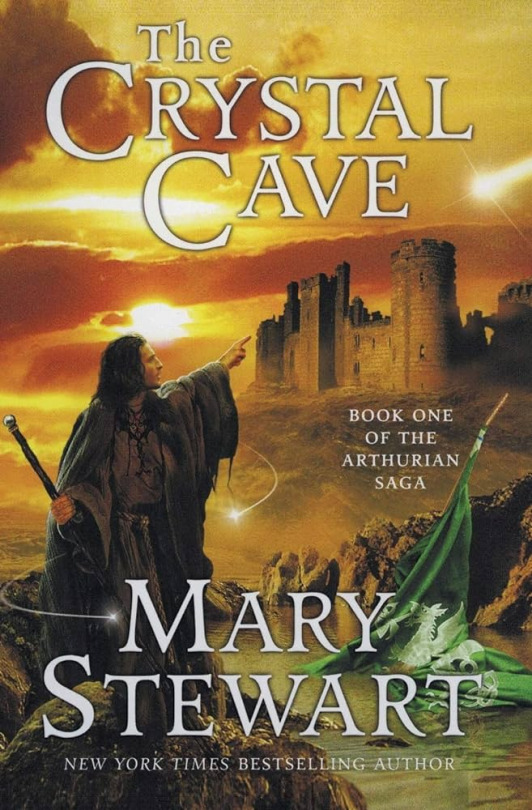
II/ Wizards and witches
The fantastical elements within modern rewrites are often embodied in the most visible way by a few key characters. First and foremost among this magical cast is, of course, Merlin the enchanter, but also regularly the bard Taliesin, despite his lesser presence within the Matter of Britain. Taliesin indeed only appears obviously tied to Arthur within the Welsh sources, especially “Preiddu Annwn”, where he is part of the expedition led by Arthur to steal away the cauldron of resurrection from the Otherworld. We can make the hypothesis that is it because of the historical rewrites of the Arthurian legends that the character of Taliesin gained such an importance, since it is in the Welsh sources that he is most frequently seen, sources that modern rewriters especially love due to judging them more ancient and thus more “authentic” and more Celtic than the chivalry romances and knighthood romans of France and England. Since Wales resisted more strongly to the Saxon invader, then to the Normand influence, modern novelists like to use the “Mabinogion” and the Welsh poems to historicize their Arthur. Taliesin usually stays within his traditional role of bard, in accord to the historical and bibliographical information we have about him. While quite brief, these information naturally designate him as the symbol of the Arthurian legend within a “realistic” rewriting, as a character between the history and the myth.
[In the “Hanes Taliesin” mainly, translated by Lady Charlotte Guest and which follows her “Mabinogion” translations, we discover the two births of Gwyon Bach/Taliesin, is exploits as a bard within the court of prince Elphin, and some of his poems. The historical Taliesin seems to have been a bard at the court of Urien Rheged during the 6th century, and the poems attributed to him were preserved within the “Llyfr Taliesin” (The Book of Taliesin). It notably contains the famous “Cat Godeu” (Battle of the Trees) and the previously mentioned “Preiddu Annwn”. These Welsh poems, like many others, were translated and published by William F. Skene within his “Four Ancient Books of Wales”]
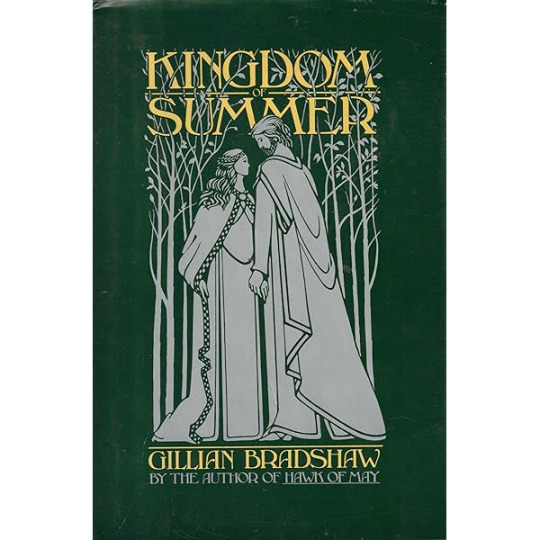
As such, within Fay Sampson’s “Daughter of Tintagel” cycle he becomes one of the five narrators that relate the life of Morgan. A first-person narration that give a voice to a secondary character of the medieval corpus is a fundamental trait of modern Arthurian literature : as such, we can hear Kai, Pelleas, Bohort, Rhys or Bedwyr, characters whose point of view is rarely given in legends, alongside the manifestation of more novel characters, such as Derfel, a shadowy warrior turned saint in the 6th century who narrates Bernard Cornwell’s “Warlord Chronicles”. [Respectively, Kai is heard within Phyllis Ann Karr’s The Idylls of the Queen and John Gloag’s Artorius Rex ; Pelleas within Stephen R. Lawhead’s Arthur and Courtway Jones’ In the Shadow of the Oak King ; Bohort within Dorothy Jane Roberts’ Launcelot my Brother ; Rhys within Gillian Bradshaw’s Kingdom of Summer ; Bedwyr within Catherine Christian’s The Sword and the Flame and Stephen R. Lawhead’s Arthur.]
Within Stephen Lawhead’s works, the role of Taliesin is more developed since he becomes the father, and so the precursor of Merlin (within Marion Zimmer Bradley’s, he is Merlin’s first incarnation). In his trilogy, the bard Talesin paves the way for Merlin, who will surpass his father in his role as the companion of the major hero, Arthur king of Britain. It is precisely this dimension that is often used by modern Arthurianists. [Stephen R. Lawhead wrote in reality five novels, the last two being a flash-back to episodes from between book 2 and 3. This Arthurian cycle is especially concerned with the questions of filiation, legitimacy and predestination. As such, Taliesin announces and foreshadow the coming of his son, a sort of messiah for the Britons, but Merlin himself works for the coming of Arthur, the savior of Britain as much on a spiritual level (the writings of Lawhead are distinctly Christian in tone) as on a political level. It is probably why we also see here a weird and exceptional element introduced, as Arthur is made the posthumous son of Aurelius, and not the bastard of Uther. Here Arthur is the product of an union blessed by the Church, and as such he descends from the first High-King, not from his replacement out of a “side-branch” of the family.]
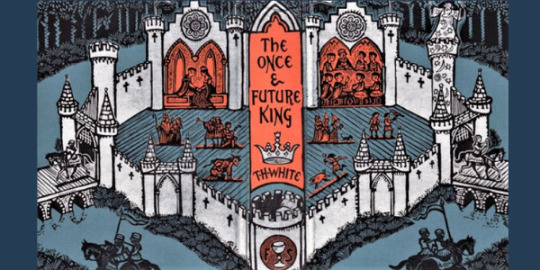
We also have to note that modern rewrites love to tell what happened during the life of characters in the form of prequels – in this case, the youth of Merlin, which is rarely detailed in the Middle-Ages outside of his birth and his encounter with Vortigern. It was the case within Mary Stewart, the first author who was concerned with the wizard’s youth, and who sems to have deeply marked modern Arthurianists, since the same pattern can be found in other novels, including those of Stephen Lawhead. This concern with “what happened before” is not exclusively Arthurian, and can be seen within other contemporary sagas – Star Wars, Indiana Jones, Blueberry… It is a tradition as old as the various “Childhoods” texts of the Middle-Ages. [Mary Stewart wrote “The Crystal Cave”, “The Hollow Hills” and “The Last Enchantment”. As a proof of the intertextuality of Arthurian novels, “the last enchantment” is an expression reused and exploited by Bernard Cornwell in the last part of his trilogy, where a dying Merlin, entirely devoured by his own student Nimue, preserves a “last enchantment” to allow Arthur and a few others to escape the battle of Camlan]
Be it Taliesin or Merlin, the first way the question of the magic implants itself within the narrative device is about the relationship between the king and his wizard. The magical element is thus tied to the political power, weighed down by a reality which, if not historical, is at least coherent. This heirloom is directly tied to the medieval sources, even if it is not obvious at first. The idea of an Arthur raised as a boy by Merlin owes much more to T.H. White’s “The Once and Future King” than to the medieval texts, where only a slow and complex evolution allowed the association of those two characters now seen as undividable. [White’s work is a set of five novels, first published separately, then compiled as one work in the 50s, and to which the last novel, The Book of Merlin, was added in 1977. This work is a precursor of all the rewrites that happened from the 60s onward, especially the first book that tells of Arthur’s childhood and his education by Merlin. It was a best-seller, and the adaptation of this first novel into an animated movie by Disney (63’s The Sword in the Stone) amplified its impact]. Indeed, within Geoffroy of Monmouth, Merlin and Arthur follow each other in the text… but never meet. It was within later rewrites, Wave, Lawamon, and in the French “Lancelot-Graal”, that the king and the enchanter will develop a more intimate relationship, culminating within Malory’s Morte Darthur. [In Geoffroy’s tale, the two characters at least never meet within the context of the tale. A doubt is allowed since in most of the manuscripts, Merlin makes a brief apparition at the very end of the “Historia”, where an “angelic voice” talks to Cadwallader, telling him that “God wishes that the Britons stop ruling within Britain until the moment that Merlin prophesized to Arthur” ; this sentence implies that Merlin might have been the king’s prophet, a role that will become more and more obvious in later rewrites]
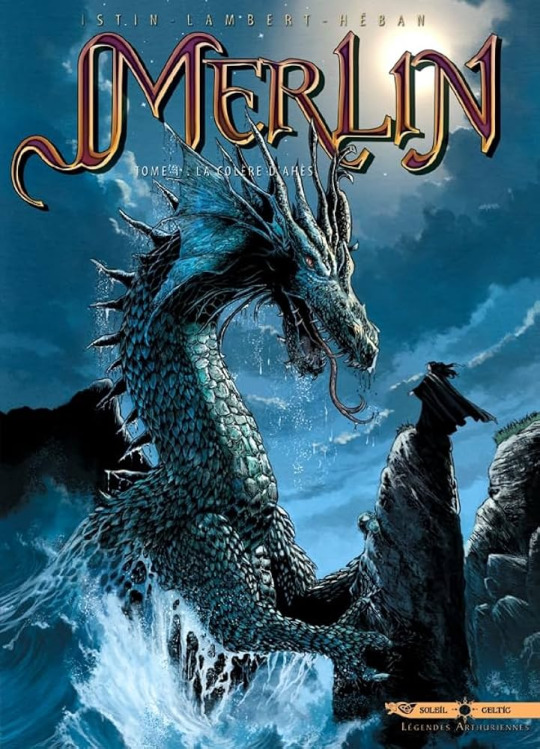
This is due to the two characters, Merlin and Arthur, originally belonging to two distinct traditions. Once they became connected thanks to Geoffroy’s Historia Regum Britaniae, the two characters got closer and closer, and gained many interactions, just as Merlin’s interventions became more and more fantastical. This is very clear when we look at an episode shared by all the medieval Merlinian tales: the moving of the stones of Ireland to create Stonehenge. Within Geoffroy’s, it is a mechanical process. Within Wace, an unexplained way. Finally, within Lawamon, it becomes a powerful spell that makes the stone “as light as feathers”. Modern authors follow this tradition and often reuse this episode, or a similar one, in what we can call “the motif of the dancing stones”. In the same way, within Lawhead’s novel, a child Merlin proves his powers to an assembly of druids by making the stones of a cromlech levitate. Stonehenge plays an important role for Cornwell: it becomes the place of a ghost-filled ceremony during which Merlin gives Excalibur to Arthur. Even among comic books, Merlin makes stones dance before amazed mortals. [It is within the first volume of the BD series “Merlin” by Jean-Luc Istin and Eric Lambert, “La colère d’Ahès” (The Wrath of Ahès). The dancing stones of Istin and Lambert are quite similar to the ones described by Lawhead, and the scenarist confessed having read the “Pendragon Cycle”. We find in this “Merlin” the same habt of syncretizing religions as within Lawhead’s works (father Blaise is a former druid, and offers Merlin as a symbol of the union of religions).]
We find back here what we said before: the historicized Arthurian literature of the 60s-80s greatly deprived the medieval text of their fantasy, and since the 80s-90s we have a slow re-appropriation of the medieval magic within novels that still, however, wish to be historical. In other terms – the stones are dancing again, but they are always dancing in a mentioned 6th century.
Before Lawamon, Merlin only acted during the lifetime of Aurelius and Uther, before disappearing for no reason after Arthur’s birth. However, the encounter between those two historical characters was too tempting to be avoided, and we can see a true shift between Geoffroy and Malory (for example), which today leads to the many tales in which Merlin acts as the teacher, tutor, or even adoptive father of Arthur. This filiation is helped by two elements. On one side, that is an elliptic moment covering Arthur’s childhood in medieval texts, and we go from him as a baby to him as a young fifteen-year old king. [We find within Lawamon the beginning of an explication: child-Arthur was raised by elves at Avalon. This idea was reused by Parke Godwin within the novel “Firelord”.] On the other hand, we can see that all of his next of kin die around the same time. In front of this absence of parents, it is very tempting to remove Ector (the father of Kay and the tutor of the royal child in the tradition) and put in his place a more familiar and impressive character, Merlin the wizard.
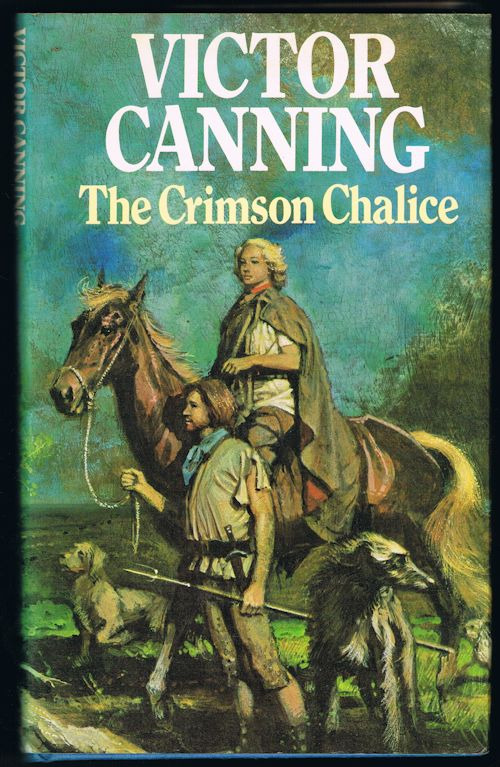
We talked before of the habit of “prequels”: the cyclical temptation of modern novels, which in a way mimics the Arthurian medieval tradition of a condensed and fractioned writing of the whole Arthurian legend (usually in three volumes), favorizes the writing of the origins, of the “before Arthur”. The introduction of Merlin, but also of Taliesin, proves this attraction for what Anne Besson calls an “Arthurian prehistory”. For Stephen Lawhead, the link between the various generations (Taliesin, father of Merlin, Merlin spiritual father of Arthur) insists upon the greatness and the predestination of the king of the Britons, the bearer of Light. Even when the Arthurian tale is limited to a single novel, it is not unusual to see it begin with the generation before Arthur: it was the case with Victor Canning’s “The Crimson Chalice”, where a third of the novel follows the events that led to Arthur’s birth (even though here Arthur’s parents are named Tia and Baradoc, and bear no resemblance to Igraine or Uther).
To all the reasons described above, we must add the fictional temptation of having characters coexisting to allow a powerful confrontation. But this temptation also bears a prevalent trait of the modern Arthurian fiction, and of its dialogue with the sources. Indeed, it is not uncommon to see a rearrangement, to various degrees, of the links that traditionally unite the characters. As such, in most sources Ygerne is the wife of Gorlois and the mother of Arthur, but she can be his half-sister and the mother of Medraud within Rosemary Sutcliff’s “Sword at Sunset”. The same Ygerne becomes Gorlois’ daughter, not his wife, in Stephen Lawhead’s work, as the author plays with the writing of the myth, has his Merlin-narrator laugh about the mad rumors that circulated about the siege of Tintagel “I have even heard it said that Ygerna was Gorlas’ wife – Imagine that!”). The marvelous does not escape this kind of more-or-less extreme shifts: the case of the female characters, of their relationship to magic, and of their role within history is especially revealing.
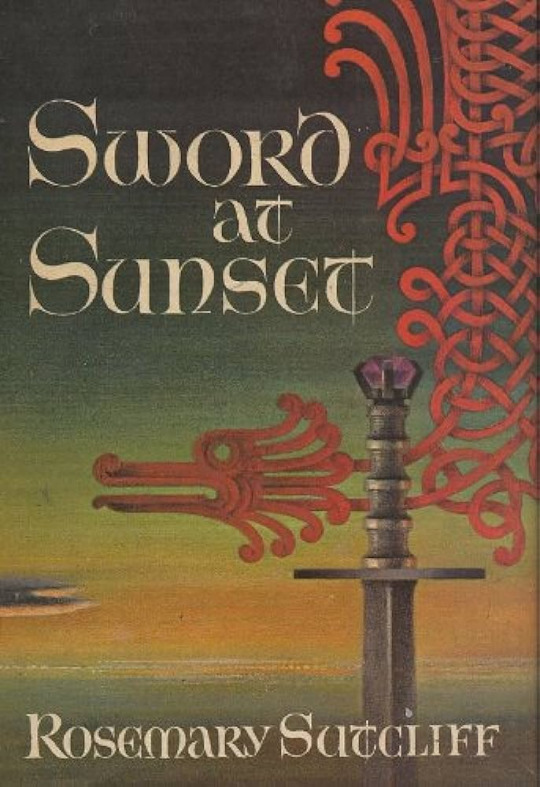
#arthuriana#fantasy#arthurian novel#fantasy novel#arthurian literature#translation#merlin#king arthur#taliesin#magic#arthurian rewrites#merlin the enchanter
13 notes
·
View notes
Text
New wasp species named after Doctor Who villain
‘Dalek’ wasps are among 815 new species described by Natural History Museum scientists in 2023
Nilima Marshall - 4 hours ago
Fourteen newly discovered species of wasps have been named after the villainous Daleks from Doctor Who to mark the 60th anniversary of the popular sci-fi series.
The insects, which bear the genus “Dalek”, are among the 619 new wasp species described this year by London’s Natural History Museum (NHM).
An alien warrior race of mutants, the Daleks are the formidable bad guys in BBC’s long-running TV show.
I thought it was a good name for a genus and a bit of fun having been a big fan of Doctor Who in my early years
Dr John Noyes, NHM
One particular species of wasp from Costa Rica called Dalek nationi also honours Terry Nation, the Welsh screenwriter and novelist who created the mutant race that terrified children for the past six decades.
Dr John Noyes, scientific associate at the NHM, said: “I thought it was a good name for a genus and a bit of fun having been a big fan of Doctor Who in my early years.”
A total of 815 new species were described by NHM scientists in 2023, including a 407-million-year-old parasitic fungus named after children’s author Beatrix Potter.
Potteromyces asteroxylicola was discovered infecting the roots of ancient plants and is thought to be the earliest disease-causing fungus ever discovered.
The researchers said they wanted to honour Potter’s reputation as a dedicated mycologist – someone who studies and works with fungi.
Dr Christine Strullu-Derrien, scientific associate at the NHM, who helped identify the new Potter fungus, said: “Naming this important species after Beatrix Potter seems a fitting tribute to her remarkable work and commitment to piecing together the secrets of fungi.”
Highlights also include fossil remains of a new dinosaur species found on the Isle of Wight, which was named Vectipelta barretti after NHM Professor Paul Barrett who worked there for two decades.
It is first the dinosaur discovered on the island for 142 years.
Other notable discoveries also include fossil remains of a giant penguin called Kumimanu fordycei – believed to be the largest penguin that ever lived – and nine new species of bristle worms including two bone-eating worms.
The researchers also report new species being discovered in “unremarkable” urban environments, including a stick insect called Micropodacanthus tweedae that was found on the side of a bin in Australia, and a moth that was located in Ealing, west London, called Tachystola mulliganae, which turned out be a new species native to Western Australia.
T. mulliganae is named after Barbara Mulligan, a lifelong moth enthusiast who discovered the species.
Mark Sterling, a scientific associate at NHM, described the finding as “real coup for citizen science”.
The new species descriptions contributed to the 722 new research papers released by the NHM over the past 12 months.
20 notes
·
View notes
Text
I don’t know how I missed it but I only now found out that Sharon Kay Penman passed away in 2021.
I am in mourning now. She was one of my all time favorite novelists. Her incredibly thick and detailed novels set in various periods of medieval England and other parts of the world are my permanent reads and rereads. I have never read a book of hers that I didn’t love.
The first book of hers I’ve read was her novel about Richard III - The Sunne in Splendour - which I read and wept over in high school. I read and wept over her Welsh Trilogy in college. And then I read and wept over her other novels as an adult.
There is only one of her novels I have not read yet - her very last book - The Land Beyond the Sea, a mammoth (of course) novel about the fall of Outremer, focusing on Balian of Ibelin.
I was hoarding it because it took years between her novels and she was getting on in years and so I was worried this would be the last. And it was.
I have obviously never met her and literally know nothing about her except what’s on the blurb on the covers of the books and I still feel like crying. It’s the same sinking feeling of losing someone important though a total stranger because their books became a fabric of your life as when Dorothy Dunnett died.
PS if you’ve never read her and love incredibly solid, immersive, historically accurate novels with a huge cast of complex characters, you should read her. Though with few exceptions there are pretty much no happy endings to be had (I am pretty sure she finally created a couple of secondary fictional characters in her Welsh Trilogy so at least someone could escape the meatgrinder.)
25 notes
·
View notes
Text
The Great Library of Alexandria had a mission to collect every book in the world. In attempting to do so it created the foundations for the systems and structures of public libraries that we know today. We discuss the development of libraries, our emotional attachment to them and their pupose in the digital age.
Islam Issa's new book traces the development of Alexandria. He joins Andrew Pettegree, author of The Library: A Fragile History, Fflur Dafydd whose murder mystery story The Library Suicides is set in the National Library of Wales and academic Jess Cotton who is researching the history of loneliness and the role played by public libraries as hubs for communities. Laurence Scott hosts.
Andrew Pettegree is a Professor at St Andrews University and the author of The Library: A Fragile History Fflur Dafydd is a novelist and screenwriter who writes in Welsh and English. She is the author of BAFTA Cymru nominated thrillers 35 awr and 35 Diwrnod and her novel The Library Suicides has also been made as a film Y Llyfrgell. Dr Jess Cotton from the University of Cambridge has been researching Lonely Subjects: Loneliness in Postwar Literature and Psychoanalysis, 1945-1975 Islam Issa is a Professor at Birmingham City University, author of Alexandria: The City that Changed the World. He is a New Generation Thinker on the scheme run by the BBC and Arts and Humanities Research Council to share academic research on radio. You can hear him discussing the Shakespeare collection at the Birmingham Library in an Arts and Ideas podcast episode called Everything to Everybody - Shakespeare for the people
#Libraries#BBC arts and ideas#podcast#bbc#bbc radio#library#books#knowledge#culture#cultural criticism#history#podcasts#books and libraries#books and reading#books and literature#book
14 notes
·
View notes
Text

Dog. The British novelist Mrs Ewing (1841-85) had her dog read cards, according to a review. If she put four queens in a row and let him draw one, he would decide what dinner would be that day. The four choices were Welsh rabbit, blueberry pudding, pork sausage and pancakes, all of which sounded delicious.
27 notes
·
View notes
Text
It’s October! The month in which I watch even more horror movies than usual. Each year I tend to have a theme to help narrow down what to watch. So far I’ve done Zombie Films, Werewolf Films, Vampire Films, Slasher Films and Ghost Films. This year's theme is Cosmic/Eldritch Horror, often referred to as Lovecraftian Horror.
This list won’t cover every film inspired by H.P. Lovecraft’s works or those featuring similar elements, but I’ve watched plenty and decided to highlight the ones I personally enjoyed. If you're interested in exploring this subgenre, here are my top recommendations, in no particular order…
In the Mouth of Madness (1994) -- is an American supernatural horror film directed and scored by John Carpenter and written by Michael De Luca. It stars Sam Neill, Julie Carmen, Jürgen Prochnow, David Warner and Charlton Heston.
When horror novelist Sutter Cane goes missing, freelance insurance investigator John Trent scrutinizes the claim made by his publisher, Jackson Harglow. He's to retrieve a yet-to-be-released manuscript and ascertain the writer's whereabouts. Accompanied by the novelist's editor, Linda Styles, and disturbed by nightmares from reading Cane's other novels, Trent makes an eerie nighttime trek to a supernatural town in New Hampshire.
In the Mouth of Madness pays tribute to the works of author H. P. Lovecraft in its exploration of insanity, and its title is derived from the Lovecraft novella At the Mountains of Madness.
Color Out of Space (2019) -- is an American science fiction Lovecraftian horror film directed and co-written by Richard Stanley, based on the short story "The Colour Out of Space" by H. P. Lovecraft. It stars Nicolas Cage, Joely Richardson, Elliot Knight, Madeleine Arthur, Brendan Meyer, Q'orianka Kilcher and Tommy Chong.
The Gardner family moves to a remote farmstead in rural New England to escape the hustle of the 21st century. They are busy adapting to their new life when a meteorite crashes into their front yard, melts into the earth, and infects both the land and the properties of space-time with a strange, otherworldly colour.
The Void (2016) -- is an Canadian Lovecraftian horror film written and directed by Steven Kostanski and Jeremy Gillespie, and produced by Jonathan Bronfman and Casey Walker. It stars Aaron Poole, Kenneth Welsh, Daniel Fathers, Kathleen Munroe, and Ellen Wong.
In the middle of a routine patrol, officer Daniel Carter happens upon a blood-soaked figure limping down a deserted stretch of road. He rushes the young man to a nearby rural hospital staffed by a skeleton crew, only to become trapped by a gathering of hooded cultists, and grotesque creatures.
The Lighthouse (2019) -- is an American film directed and produced by Robert Eggers, from a screenplay he wrote with his brother Max Eggers. It stars Willem Dafoe and Robert Pattinson as nineteenth-century lighthouse keepers in turmoil after being marooned at a remote New England outpost by a wild storm.
Cold Skin (2017) -- is a French-Spanish science fiction-horror film directed by Xavier Gens and based on the 2002 novel of the same name by Albert Sánchez Piñol.
On the edge of the Antarctic Circle, a ship approaches a desolate island, far from all shipping lanes. On board is a young man who is on his way to assume the post of weather observer and live in solitude at the end of the earth. He finds no trace of the man he has been sent to replace, just a deranged castaway who has witnessed a horror he refuses to name. For the next twelve months, his entire world will consist of a deserted cabin, trees, rocks, silence and the surrounding sea.
Note: I wasn’t planning on including this, but after watching The Lighthouse, I figured—why not? It definitely fits the theme.
Underwater (2020) -- is an American science fiction action horror film directed by William Eubank. The film stars Kristen Stewart, Vincent Cassel, Jessica Henwick, John Gallagher Jr., Mamoudou Athie, and T.J. Miller.
After an earthquake destroys their underwater station, six researchers must navigate two miles along the dangerous, unknown depths of the ocean floor to make it to safety in a race against time.
Offseason (2021) - is an American supernatural horror film written and directed by Mickey Keating. It stars Jocelin Donahue, Joe Swanberg, Richard Brake, and Melora Walters.
Upon receiving a mysterious letter that her mother's grave has been vandalized, Marie quickly returns to the isolated offshore island where she's buried. Just as she arrives, the island closes for the season as the bridges get raised until springtime. Left stranded, Marie soon realizes that something is not quite right as she has one strange interaction after another. She must now unveil the mystery behind her mother's troubled past to make it out alive.
Annihilation (2018) -- is a science fiction psychological horror film written and directed by Alex Garland, based on the 2014 novel of the same name by Jeff VanderMeer. It stars Natalie Portman, Jennifer Jason Leigh, Gina Rodriguez, Tessa Thompson, Tuva Novotny, and Oscar Isaac.
The story follows a group of explorers who enter "The Shimmer", a mysterious quarantined zone of mutating plants and animals caused by an alien presence.
Lena, a biologist and former soldier, joins a mission to uncover what happened to her husband inside Area X -- a mysterious quarantined zone that is expanding across the American coastline. Once inside, the expedition discovers a world of mutated landscapes and creatures, as dangerous as it is beautiful, that threatens both their lives and their sanity.
Event Horizon (1997) -- is a science fiction horror film directed by Paul W. S. Anderson and written by Philip Eisner. It stars Laurence Fishburne, Sam Neill, Kathleen Quinlan and Joely Richardson.
Set in 2047, it follows a crew of astronauts sent on a rescue mission after a missing spaceship, the Event Horizon, spontaneously appears in orbit around Neptune, only to discover that a sinister force has come back with it.
The Mist (2007) -- (also known as Stephen King's The Mist) is an American science-fiction horror film based on the 1980 novella The Mist by Stephen King. The film was written and directed by Frank Darabont. The film features an ensemble cast, including Thomas Jane, Marcia Gay Harden, Nathan Gamble, Andre Braugher, Sam Witwer, Toby Jones, Frances Sternhagen, Buck Taylor, Robert Treveiler, William Sadler, Alexa Davalos, David Jensen, Chris Owen, Andy Stahl, and future The Walking Dead stars Jeffrey DeMunn, Laurie Holden, Melissa McBride, and Juan Gabriel Pareja.
After a violent storm, a dense cloud of mist envelops a small Maine town, trapping artist David Drayton and his five-year-old son in a local grocery store with other people. They soon discover that the mist conceals deadly horrors that threaten their lives, and worse, their sanity.
The Cellar (2022) -- is an supernatural horror film written and directed by Brendan Muldowney. It's an international co-production between Ireland and Belgium. It also starsElisha Cuthbert and Eoin Macken.
It follows a family whose daughter mysteriously vanishes in the cellar of the large estate they have just moved into.
Glorious (2022) -- is an American comedy horror film directed by Rebekah McKendry, and starring Ryan Kwanten and J. K. Simmons.
The film involves a heartbroken man who encounters a strange, all-knowing entity in a rest stop bathroom stall.
Bonus:
Non-film media that's either based on Lovecraft’s works, heavily influenced by his style, or unintentionally evoke a strong Lovecraftian vibe.
Guillermo del Toro's Cabinet of Curiosities (2022): The anthology series explores various horror themes, but several episodes have strong Lovecraftian elements, particularly those dealing with cosmic horror, forbidden knowledge, and ancient, unknowable forces. Del Toro is known for his deep appreciation of H.P. Lovecraft's works, and this influence is evident in the show.
The Rig (Season 1): Set on a remote oil rig in the North Sea, the show taps into themes of isolation, ancient unknowable forces, and the eerie environment of the deep ocean. As mysterious events unfold, the characters face something beyond their comprehension, which parallels many of Lovecraft's ideas about humans being insignificant in the face of larger cosmic forces.
Stranger Things (Season 2): While influenced by 80s pop culture and science fiction, Season 2 leans more heavily into Lovecraftian elements.
The Terror (Season 1): A historical horror series based on the real-life Franklin expedition, captures the sense of dread, isolation, madness, and humanity’s powerlessness against forces beyond their understanding—core elements of Lovecraftian horror.
True Detective (Season 1): Though not based on Lovecraft, the philosophical themes, atmosphere, and references to the "Yellow King" evoke Lovecraftian dread and nihilism.
Outer Range (2022–): This series blends Western themes with supernatural mystery and cosmic horror. The show builds a sense of tension and unease, tapping into themes of the unknown without giving too much away. It’s perfect for those who like stories with mysterious, otherworldly elements that slowly unfold, keeping you on edge.
7 notes
·
View notes
Text
Birthdays 9.22
Beer Birthdays
Lord Chesterfield; English statesman (1694)
Alfred Vinzenz Werthmueller (1835)
George Kennth Hotson Younger (1931)
Carlos Sanchez (1958)
Dave McLean (1969)
Five Favorite Birthdays
Bilbo Baggins; Hobbit character
Frodo Baggins; Lord of the Rings character
Michael Faraday; English scientist (1791)
Joan Jett; rock singer, guitarist (1958)
Tatiana Maslany; Canadian actor (1985)
Famous Birthdays
King Sunny Ade; Nigerian reggae singer (1946)
Scott Baio; actor (1960)
Eric Baker; English activist, co-founded Amnesty Int’l (1920)
Toni Basil; pop singer (1943)
Elizabeth Bear; author and poet (1971)
Shari Belafonte; actor (1954)
Maurice Blanchot; French philosopher (1907)
Andrea Bocelli; Italian singer-songwriter (1958)
Debby Boone; pop singer (1956)
Barthold Heinrich Brockes; German poet (1680)
Harold Carmichael; Philadelphia Eagles WR (1949)
Nick Cave; rock musician (1957)
Neil Cavuto; journalist and author (1958)
Ellen Church; 1st airline stewardess (1904)
Dave Coverdale; rock singer (1951)
Quintin Craufurd; Scottish author (1743)
Babette Deutsch; poet (1895)
Ashley Eckstein; actress (1981)
Will Elder; illustrator (1921)
György Faludy; Hungarian poet & author (1910)
Tom Felton; English actor (1987)
Grigory Frid; Russian pianist & composer (1915)
Philipp Nicodemus Frischlin; German mathematician, astronomer & poet (1547)
Theodore Hook; English composer (1788)
John Houseman; actor (1902)
Bonnie Hunt; actor (1964)
Ruth Jones; Welsh actress (1966)
Anna Karina; actor (1940)
Brian Keene; novelist (1967)
Charles Keeping; English author & illustrator (1924)
Allan "Rocky" Lane; voice of "Mr. Ed" (1909)
Tommy Lasorda; Los Angeles Dodgers coach (1927)
Paul Le Mat; actor (1945)
Katie Lowes; actress (1982)
Matthäus Merian; Swiss-German engraver & cartographer (1593)
Ian Mortimer; English historian & novelist (1967)
Paul Muni; actor (1895)
Catherine Oxenburg; actor (1961)
Peter Simon Pallas; German zoologist & botanist (1741)
Rupert Penry-Jones; English actor (1970)
Sue Perkins; English comedian, actress (1969)
Saul Perlmutter; astrophysicist, astronomer (1959)
Rosamunde Pilcher; English author (1924)
Billie Piper; English singer, actor (1982)
Arthur Pryor; trombonist, composer (1870)
Paolo Ruffini; Italian mathematician & philosopher (1765)
Martha Scott; actor (1914)
Elizabeth Simcoe; English-Canadian painter & author (1762)
Bill Smith; clarinet player & composer (1926)
Theodore Clement Steele; artist (1847)
Michael Torke; composer (1961)
Ken Vandermark; saxophonist & composer (1964)
Charles Waterhouse; painter (1924)
Fay Weldon; English writer (1931)
Billy West; actor (1892)
Ray Wetzel; trumpet player & composer (1924)
1 note
·
View note
Text
Be Inspired by A.J. Cronin

Archibald Joseph Cronin is best known as A. J. Cronin and was a Scottish physician and novelist. His best-known novel is The Citadel which was published in 1937 and is a story about a Scottish doctor who serves in a Welsh mining village before achieving success in London. The themes explored in The Citadel inspired the creation of Britain's National Health Service (NHS) after World War Two.
#manchester#london#uk#liverpool#scotland#aj cronin#bookshops#books and reading#books#books & libraries#reading#booklr#bookstagram#book review#the citadel#wales#healthcare#health#nhs#ww2 history#ww2
3 notes
·
View notes
Text
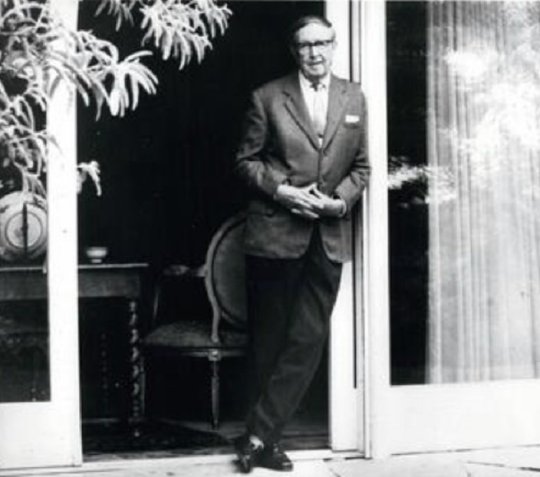


19th July 1896 saw the birth of AJ Cronin, the Scottish novelist and doctor.
For one short period Archibald Joseph Cronin was the highest-earning novelist in the world, outselling even Agatha Christie, and he is credited with encouraging the foundation of the National Health Service.
Born as Archibald Joseph Cronin in Cardross, Dumbartonshire, A J lost his father when he was young to tuberculosis and the family moved to Dumbarton, where he was educated at the Academy , before they moved again to Yorkhill, Glasgow and he attended St Aloysius' College. He was a fine athlete as well as an outstanding student; going on to study at Glasgow University qualifying in medicine at with top honours.
He worked at the Rotunda, Dublin, and on the Clyde before moving to Tredegar in Wales. He was a Medical Inspector of Mines, and was involved in the mining disaster at Ystfad colliery in which 38 miners drowned, and drew on these experiences in his writing. He moved on to Harley Street in London and finally established a very successful practice at 152 Westbourne Grove in Notting Hill, west London, where he practised until 1930.
Cronin’s writing career began when he was given six month’s bed rest for a digestive complaint. While convalescing from an attack of gastric ulcers on a lonely farm in the Highlands, he wrote Hatter’s Castle in 1931, about a Scottish hatmaker obsessed with the idea of his noble birth. It became a best seller. In the United States, a reviewer for The New York Times found it a work of a novelist “destined for the seats of the mighty.”
After the success he enjoyed with his first novel Cronin devoted himself full-time to writing. In 1935, he wrote The Stars Look Down, the story of a North England mining community that quickly captured attention. While The Times of London said the author had “a bent for melodrama,”
The Citadel drew on Mr. Cronin’s own experiences. It was the story of a young Scottish doctor in a Welsh mining village who sets up a fashionable practice in London and realizes the values of the life he had abandoned. It was made into a film starring Robert Donut.
The New York Times found him “uncannily like Dickens.” In 1940, the book was made into a highly praised film directed by Carol Reed for M-G-M.
The Citadel again drew on Mr. Cronin’s own experiences. It was the story of a young Scottish doctor in a Welsh mining village who sets up a fashionable practice in London and realizes the values of the life he had abandoned. Agaon it was made into a film starring Robert Donut. The Citadel did not go down well with the medical profession and Cronin made enemies in the medical profession, there was a concerted effort by one group of specialists to get The Citadel banned.
When The Keys of the Kingdom was published in 1941, it passed the half-million mark in sales and was a Book-of-the-Month Club selection. The hero of the novel was a self-sacrificing Catholic priest sent by his superiors into long service as a missionary in China.
Arguably Cronins most well known work, at least here at home, is ‘Dr. Finlay’s Casebook, about a pair of Scottish doctors sharing a practice. It became one of the longest-running British television series. Dr Finlay practised in the fictional town of “Tannochbrae”. The first few episodes of the original TV series were filmed in Milgavie, filming moved to Callander. The 90’s reboot was filmed in Auchtermuchty, Fife. But I hope I have demonstrated in this post that A J Cronin was not just all about Dr Finlay, which he didn’t start writing until 1952 by which time he had over 20 works published and was a very well established author.
By 1958, the total sales of his books in the United States alone had passed the seven million!
There have been numerous adaptations of his works made into Film and television series. The Citadel alone has been made into a Film once and a TV mini-series 4 times, the latest being in 2003 in Italy. Doctor Finlay has seen two TV adaptations through the years A J Cronin died at the age of 84 in a clinic in the village of Glion, near Montreux, Switzerland, where he had lived for the last 25 years of his life. He is buried in Cimetière de La Tour-de-Peilz, La Tour-de-Peilz.
Cronin may have spent many years away from Scotland, but oor country was always in his heart and thoughts, I love this quote from him;
“Although I have travelled the world over I must say in all sincerity that my heart belongs to Dumbarton… In my study there is a beautiful 17th century coloured print of the Rock… I even follow with great fervour the fortunes of the Dumbarton football team.”
3 notes
·
View notes
Text
4 notes
·
View notes
Text

Ernest Hemingway
American novelist and short story writer
Ernest Miller Hemingway was an American novelist, short-story writer, and journalist. His economical and understated style—which included his iceberg theory—had a strong influence on 20th-century fiction, while his adventurous lifestyle and public image brought him admiration from later generations.
Born: July 21, 1899, Oak Park, Illinois, United States
Died: July 2, 1961, Ketchum, Idaho, United States
Children: Gloria Hemingway, Jack Hemingway, Patrick Hemingway
Spouse: Mary Welsh Hemingway (m. 1946–1961), MORE
Grandchildren: Margaux Hemingway, Mariel Hemingway, MORE
Influenced by: Gertrude Stein, William Faulkner, Mark Twain, MORE
You are so brave and quiet I forget you are suffering.
Ernest Hemingway
4K notes
·
View notes
Text
Asterine Marlais_vessel of emptiness





╭── ⋅ ⋅ ── ✩ ── ⋅ ⋅ ──╮
ᴀᴘᴘᴇᴀʀᴀɴᴄᴇ


"My name is.. Asterine."
_Asterine Marlais_shattered vessel

Full Name: Asterine Clockwork Marlais-Khvoshchinskaya/Khavenyush'ka [1]
⤿Asterine: Combined between the name 'Aster' from Greek, meaning 'star' and 'Rinne', which sounds like the Buddhist cycle of continuous death and rebirth.
⤿Clockwork: A mechanism with a spring and toothed gearwheels, used to drive a mechanical clock, toy, or other device.
⤿Marlais: Welsh name, meaning 'Blue'.
⤿Khvoshchinskaya: The surname of Nadezhda Khvoshchinskaya, a Russian novelist, poet, literary critic and translator. She published much of her work under the pseudonym V. Krestovsky. She later added "alias" to her pseudonym to avoid being confused with the writer Vsevolod Krestovsky.
⤿Khavenyush'ka: A name inspired by the Polish and Russian surname, Khvoshchinskaya.
Japanese: アステリン • クロックウォック• マーレース • クボシュキンスカヤ / カブヌーシュカ
Other Name(s):
↳Aster_ Asmodeus + Andreja Beaudrox [@/queen-of-twisted]
↳Doctor Asterine_Lucifer
↳Syrine_ Maddi
↳The Child of Darkness
↳Head Priest of the Darkness
↳Blessed Child of Veilaseyna
Title(?):
↳The Vessel of Emptiness
Voice Actor(s):
↳Japanese_Itou Kento_Aoyagi Toya from Project Sekai
↳English_Hex Haywire_Nijisanji EN

╭── ⋅ ⋅ ── ✩ ── ⋅ ⋅ ──╮
Age: 26 (Appearance Wise)_?
Gender: Transmasc Non-Binary (They/He)
Species: Human (?)
Nationality: Swedish-Russian-Japanese
Height: 194cm
Birthday: October 14_Libra
Hair Color: Silvery White_Black [Formerly]
Eye Color: Hot Pink_Bright Cyan
╰── ⋅ ⋅ ── ✩ ── ⋅ ⋅ ──╯
╭── ⋅ ⋅ ── ✩ ── ⋅ ⋅ ─╮
『Family:
↳Rosemi Khavenyush'ka(Mother; Witch) †
↳Claude Percival Marlais (Father; Sorcerer)
↳Aether Prometheus Khavenyush'ka-Marlais (Younger Brother/??)』
Occupation(s):
↳Therapist [Formerly]_Cafe Owner
╰── ⋅ ⋅ ── ✩ ── ⋅ ⋅ ──╯
┌──═━┈━═──┐
ᴘᴇʀsᴏɴᴀʟɪᴛʏ
'A vessel', is what people called the human named Asterine Marlais. They're not entirely far from the truth, either.
Asterine acts polite and very formal as a therapist and a café owner, always call people with Mister or Miss or other pronouns that they want to go by. They make rather delicious mint-flavor drinks and will hear you confess about your feelings and emotions.
There are sometimes where Asterine will allow himself to induge in your conversations with him, talking in his inhumanly low voice while keeping up a weird charisma around him. One couldn't be focus when Asterine was around,, not like they know it.
But alas, contrary to popular belief,, Asterine gains quite the rumors, don't you think?
They can't seem to understand the concept of human emotions, and as expected, fall to express it out of their face. As nice as Asterine shows, he chooses not to interact with people much, mainly for no reasons, honestly.
His peers said that Asterine was like an empty shell of what they used to be- His eyes used to reflect lights so bright they can be compared to stars.
Now they just looked empty.
But no matter their dead voice, lack of emotions and corpse-like eyes, they will always stay at this world.
Just because they can.
A therapist who cannot be empathetic, huh.
└──═━┈━═──┘
┏━✦❘༻༺❘✦━━┓
Likes: Sleeping, drawing, the Devildom, sightseeing, iced coffee, iced mint flavor tea, iced drinks, instant noodles, manga and Light Novels (Especially Kagerou Project and Evillious Chronicles), psychological horror novels, the feelings of nostalgia, being alone, Vocaloid musics.
Dislike(s): Solomon's cooking, human emotions, betrayers, animal abusers, the feeling of abnormality, themself, some of his kinship's members, loud noises.
┗━✦❘༻༺❘✦━━┛
↳Backstory: TBA
↳Theme: Bake no Hana_ Nakiso
↳Asterine's signature animals are sheeps and jellyfishies.
↳Asterine has very bad health that they have to visit at the hospital to check their health twice per week.
↳Is a good student with somehow good result.
↳They have a garden of mints behind their coffee shop, mainly because they like to prepare ingredients themselves.
↳Has Marie Antoinette Syndrome, Alexithymia and mild AVPD.
@achy-boo @writing-heiress @queen-of-twisted @yukii0nna @kousaka-ayumu
5 notes
·
View notes
Text

Jeanne Moreau in Eva (Joseph Losey, 1962)
Cast: Jeanne Moreau, Stanley Baker, Virna Lisi, James Villiers, Ricardo Garrone, Lisa Gastoni, Checco Rissone, Enzo Fiermonte, Nona Medici, Alexis Revidis, Peggy Guggenheim, Giorgio Albertazzi. Screenplay: Hugo Butler, Evan Jones, based on a novel by James Hadley Chase. Cinematography: Gianni Di Venanzo, Henri Decaë. Production design: Richard Macdonald, Luigi Scaccianoce. Film editing: Reginald Beck, Franca Silvi. Music: Michel Legrand.
Jeanne Moreau, as was so often the case when she was cast in a movie, is the best thing about Joseph Losey's Eva. She plays a high-class prostitute who makes the messy life of Welsh novelist Tyvian Jones (Stanley Baker) even messier. He has hit the jackpot with his best-selling novel, now made into a movie, and is living it up in Venice when he meets Moreau's Eve Olivier. The rest is the old familiar story of the undoing of a man who has already started to come undone, so there's not much plot to follow in Eva. There are some glimpses of Venice and Rome in winter, denuded of tourists, and some interest to be had in watching how the inevitable occurs, but apart from capable performances, Eva doesn't have much else to recommend itself.
1 note
·
View note